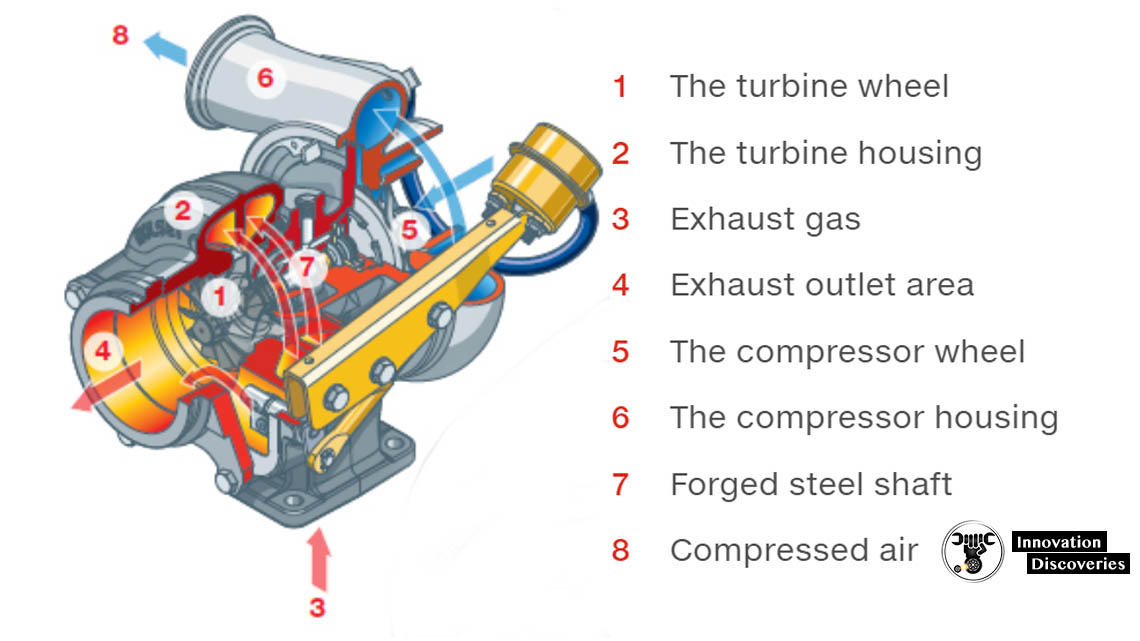
THE DARK ART OF TURBOCHARGING. PART 1
As part of our internal combustion engine series, we just had to add one more topic. Of course, I know that the series is just scratching the surface but what I needed to do to lay the foundation for a simple, understandable set of articles so that anyone, reading the series can understand the basics of internal combustion and as the final part I want to talk about one of my favorite topics – turbocharging.
Most of my knowledge comes from my years of experience turbocharging and modifying turbo cars. Again, I will quote my “teacher” A. Graham Bell and quote one of the books I have most enjoyed or have seen proven correct: Forced Induction Performance Tuning A Practical Guide to Supercharging and Turbocharging.

I. What is a turbocharger?
A turbocharger or turbo for short is a mechanical device attached to the engine’s exhaust (typically near the beginning of the exhaust manifold) which uses the exhaust gases generated from the engine to produce pressurized air. As we have mentioned in our previous posts, we consider atmospheric pressure -101,325 Pa (1,013.25 hPa), which is equivalent to 1,013.25 millibars, 760 mm Hg, 29.9212 inches Hg, or 14.696 psi. The atm unit is roughly equivalent to the mean sea-level atmospheric pressure on Earth; that is, the Earth's atmospheric pressure at sea level is approximately 1 atm. Everything below that is considered (untrue vacuum) or pressure lower than atmospheric. This means that everything above the atmospheric pressure is considered “BOOST” pressure. As we said before, engines are nothing more than air pumps – the more air and fuel go in – the more power comes out. In that sense – turbochargers create a magical dark art where they take the byproduct of internal combustion, then turn it into more power.
II. How does a turbo work?
It is not complicated – you have to have exhaust gases, which spin the “hot propeller which is contained in the hot part due to the hot exhaust of the turbocharger called “The hot side” – these are usually made of cast iron and house half a propeller. This propeller is attached to another propeller via a common shaft inside a cartridge and on the other side – this second propeller is contained inside the “Cold side” of the turbo because the hot accelerated exhaust gases spin the hot side and generate pressurized air, this air goes into the intake of the engine and we basically force more air into the engine, when we add more fuel, more spark and advanced timing we have more power by using a byproduct. This basically makes an internal combustion engine much more efficient. On the cold side of the turbo there is an intake for unpressurized air to increase its potential, the hot side of the turbo contains an exhaust opening to offload the excess exhaust gases because sometimes they become too much for the turbo to handle. Inside the hot side of the turbo there is another device (sometimes it is detached from the turbo) called the wastegate, this wastegate does just what it says on the label – it is a diaphragm valve which has a threshold and after the amount of exhaust gas exceeds this threshold it opens a gate to release the excess exhaust gas into the exhaust of the vehicle either directly or via a “dump pipe”. This is a simple regulatory method. Here is a visual representation of the situation based on the exhaust and compression part of the turbo – the turbine wheel, the housings, the compressor wheel, and the shaft:

Courtesy of innovationdiscoveries.space.
III. Turbo application.
When you have a turbo charger in the factory vehicle it has its limitations in your vehicle, it has to survive 200000km and so on. This limitation is defined by the Turbocharger’s A/R which is a representation of Area vs. Radius which is a simple calculation of how much air the turbo can potentially stuff into your ICE the radius of the compressor wheel over the area of the compressor housing outlet. Lets say that the turbo in a factory car is roughly limited to 70% of its potential, when you force the turbo to increase the boost pressure you will get more power but the engine will lean out – you need more fuel and more spark at a different time. So just increasing pressure will not be a good solution because lean burning (lower than stoichiometry) will cause a big boom (not in a good way).
In one of our next topics on turbo chargers we will discuss the idea of intercooling, the different methods and ideas. See you soon and try to have fun at work.
Alek